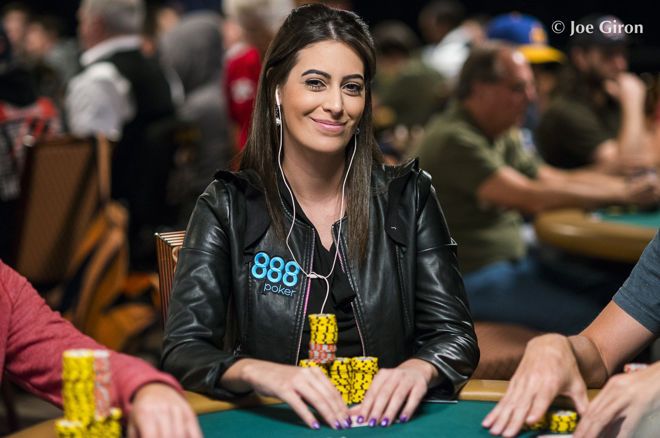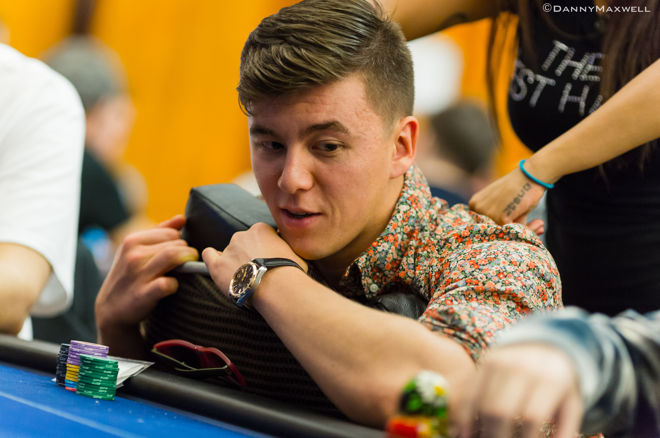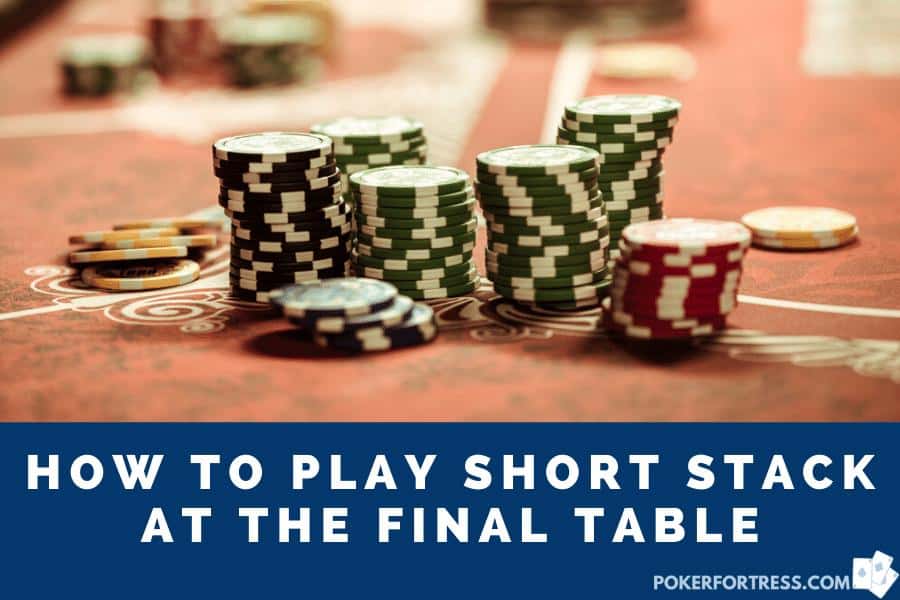Short Stack Poker Tournament Strategy
How to Maneuver a Tournament Short Stack Monitoring your stack size is one of the most crucial elements of the tournament poker play and beginners often don’t pay it enough attention. Most tournaments start off with 100 BB stacks or higher, but the blinds will continue raising with our stack in relation shrinking. There are some differences between optimal tournament and cash game strategies. One of the main things to keep in mind when playing tournaments is protecting your stack. In a cash game, you can rebuy whenever you want, so it’s not as big of a deal if you go all in and lose. However, in a tournament, once you lose your. Short Stack Strategy in NL Cash Games It is a common misconception that short stack poker induces a simpler, more profitable experience for the beginner. Where as buying in for less than the maximum has its merits – it can be less damaging in the short-term for your bankroll and be a real money-spinner if your opponents fail to adjust. At this stage of a tournament, I can give you as close to a poker 'system' as there is available. 11-15 Big Blinds First in with this size stack you're too short to raise and then fold, but too deep to risk your whole stack on poor holdings.
- Short Stack Poker Tournament Strategy Tactics
- Texas Holdem Short Stack Strategy
- Short Stack Poker Tournament Strategy List
- Short Stack Poker Tournament Strategy Poker
Many players tense up when their stack reaches 15 big blinds and below. In truth, you should relax; with a stack this short, poker just became really easy to play. Instead of having to figure odds and read players, all you have to do is decide whether to shove or fold. At this stage of a tournament, I can give you as close to a poker 'system' as there is available.
11-15 Big Blinds
First in with this size stack you're too short to raise and then fold, but too deep to risk your whole stack on poor holdings. Stick to very premium hands in early position -- throw away AQ offsuit and KQ suited under the gun, and stay away from the smaller pairs. In late position, you can open it up a great deal, but if there are no antes, don't get too crazy. With the right type of opponents, you can make a small raise or limp with Aces or Kings if you are near certain that it will be raised behind you so you can go all in when the action gets back to you. But if there's any doubt, you're better off just pushing your chips in the middle with your big pairs.

Ten Big Blinds and Under
Poker is real easy now. With this stack, you can play unexploitable poker. Using Independent Chip Modeling and the Nash Equilibrium you can solve every situation with your stack size and hand versus however many random hands are left to act behind you. Don't know what ICM and Nash Equilibrium are? Professional card player, Chris 'Fox' Wallace and myself did the heavy lifting for you and put our charts up at pushfoldcharts.com. Go to pushfoldcharts.com and study the charts—or buy one to take with you to the card room. They give you all the information you need on what cards to push with and what cards to fold.
Short Stack Poker Tournament Strategy Tactics
Though the charts give you the unexploitable ranges, there are still some adjustments you should be making, listed below.
The Six-Big Blind Rule
When you reach six big blinds, it can become correct to raise even wider than the charts suggest. This is because six big blinds is about as low as you can go and still expect people to fold to your raises. Once you fall below that number, people begin to call very loosely—often with any two cards—and the potential profit from people folding (which is the most important part of these small stack calculations) drops to nothing.


Under Five Big Blinds
You're almost certainly going to get called when you go all in with a stack under five big blinds. Due to the pot odds and the fact that there are still a few opponents who will fold their trash incorrectly, it's still correct to push with most of your hands here. But the knowledge that you are likely going to get called can still affect your choices. If you have a true trash hand (seven-deuce offsuit springs to mind) and the next players on the blinds are very weak you might fold and hope to get it in first next hand. If there are no antes and you can look at a bunch more hands for free, you might fold. But if there are antes and you are first in, your best option for most hands is to push and pray.
Table Image
Another good reason to play very tight early in a tournament is so that when you get to the late stages people will give your raises respect. As above, the potential profit from people folding—called Fold Equity—is key to successful push/fold strategy. If you can convince your opponents that you only put all your chips in the pot with a nut hand, your fold equity, and your entire tournament equity, goes way up.
When you want to play an effective short stack in a poker tournament or if you want to use your mass accumulation of chips to play an effective big stack in poker tournaments, there is one thing that both situations have in common. The idea is to always put pressure on your opponents and to do that you have to play an aggressive style. When you are short on chips the best way to be effective is to shove your stack in when the time seems right to do so.

This is the time of a tournament when the blinds are big and you have less than 15 big blinds in your stack. If you are short stacked in a poker tournament all hope is not lost because chances are that if you win a hand or two you could be right back in the fight to win the tournament. The opposite of that is if you have a massive amount of chips in front of you. If you are chip leader in a poker tournament, ideally you want to knock out the short stacks and avoid big confrontations with other players who have big chip stacks. If you look to minimize damage and play hands against weaker stacks you could put yourself in great shape to win the poker tournament.
Short Stack Play
Texas Holdem Short Stack Strategy
When you have a short stack in a poker tournament you shouldn’t give up. You should battle and get hungry to get that big stack. You should also look for good shove spots with your short stack. If you pick up the blinds once per orbit then you are putting yourself in good shape to maintain your stack and not get dwindled away. Good shove spots occur often times from late position or if the table folds around to you, and you are in the cutoff position, the button, or the small blind. In the cutoff you shouldn’t shove too wide of a range of hands because you have to force three hands to fold.
Short Stack Poker Tournament Strategy List
From the button your range should be wider than from the cutoff position, and almost every ace high, or hands like K10, QJ suited are all reasonable to shove all-in with. From the small blind it is almost correct to shove every hand because you have to force your opponent to wake up with a hand and call you. You also have to take into account the types of players that are located in the blinds. If there are chip leaders located in the blinds, you should not be shoving as wide a range of hands simply because if they can afford to call you then they probably will call you.
If there are short stacks in the blinds you should put maximum pressure on them by shoving in. The main goal of a short stack is to apply the most pressure on your opponent as possible. If you do that then you are accomplishing your goal as a short stack.
Big Stack Play
:max_bytes(150000):strip_icc()/stemple-5c159c9446e0fb0001b9d74a.jpg)
As a big stack in a poker tournament there are a handful of things to keep in the back of your mind, like making the final table, or possibly winning the tournament. As tournaments are a long grind, you should never try to win every pot unless the table dictates that action. What you should look to do with some level of consistency is to play back at weak players, or also play back at players who may have a wider range of starting hands. The reason to do both of these things is because you force a fold before the flop a lot of the time.
Short Stack Poker Tournament Strategy Poker
The only time they will play back at you is when they have a monster hand, and this should be obvious. By forcing a fold you are then collecting a decent amount of chips without risking much of your own. This is a good way to make sure you remain a big stack in a poker tournament and avoid risking a ton of chips. Also, as a big stack in a poker tournament you want to be feared by other players. By using a 3 bet before the flop, a lot of the time you will accomplish this goal. You will narrow down the range of hands that your opponent will open a pot with and you can pin point their hands much easier. In the end to remain consistent is a big part of having the big stack. Some players will just sit on their chips and slowly move up the money ladder, but this isn’t the best way to approach big stack play.
To win poker tournaments you need confidence in your reads and well-timed aggression. To have both means you should win the tournament. When you pick on certain players at the table also this will help you maintain a big stack. Eventually when you pick on a player enough they will start to just jam all-in regardless of the action because they are fed up with your play and have had enough. Hopefully you can wake up with a big hand and collect a ton of chips at that point in time.